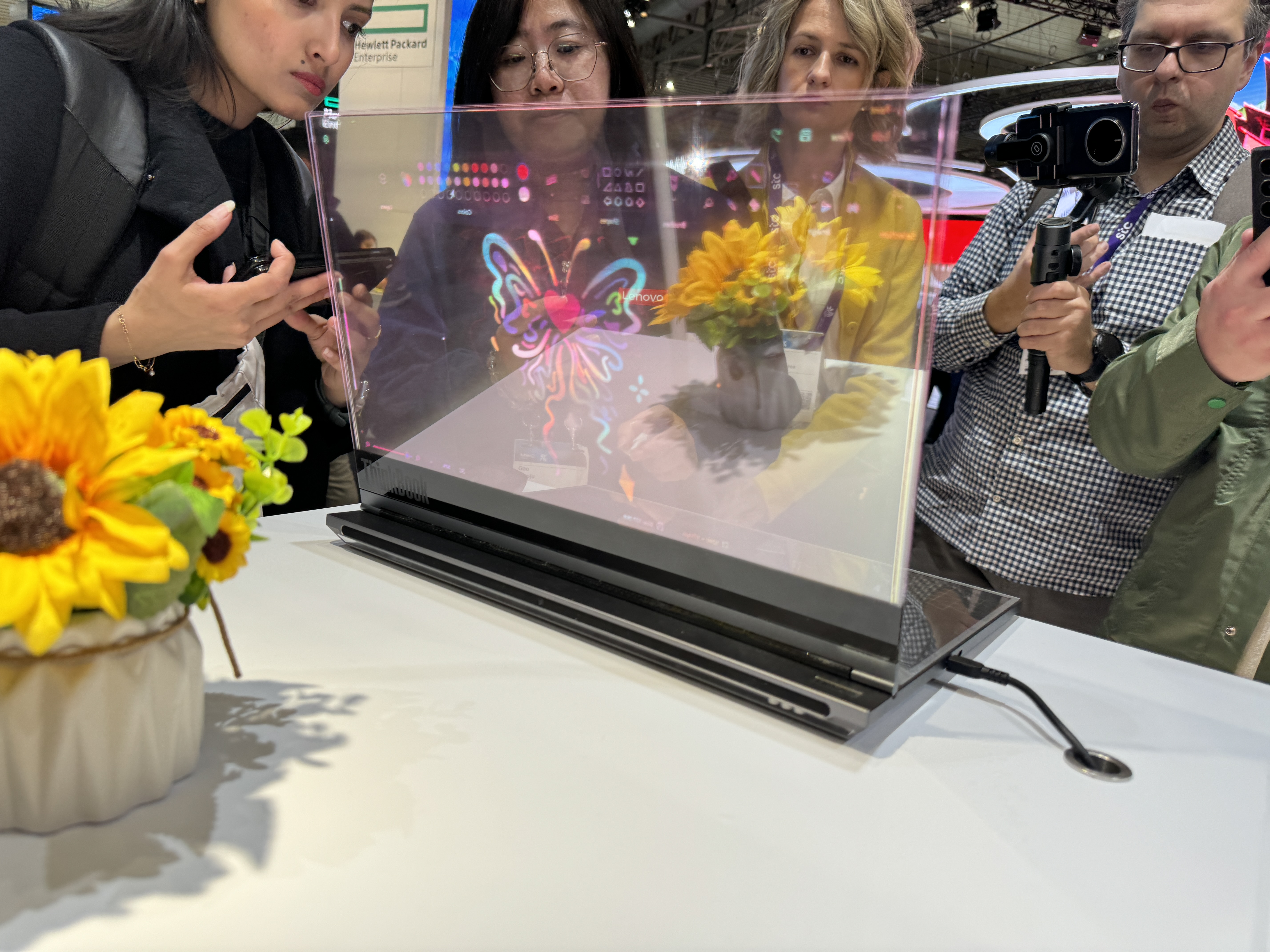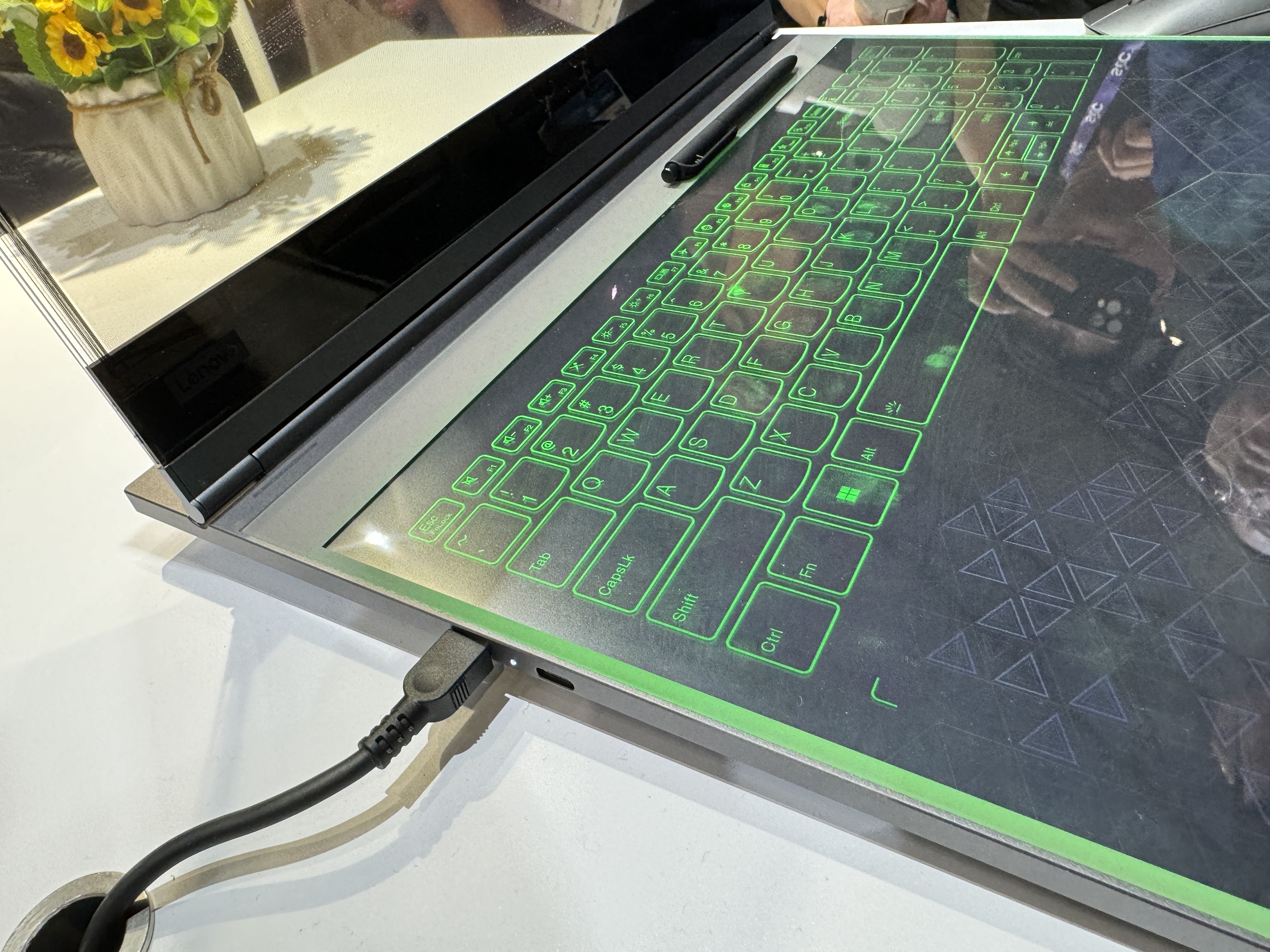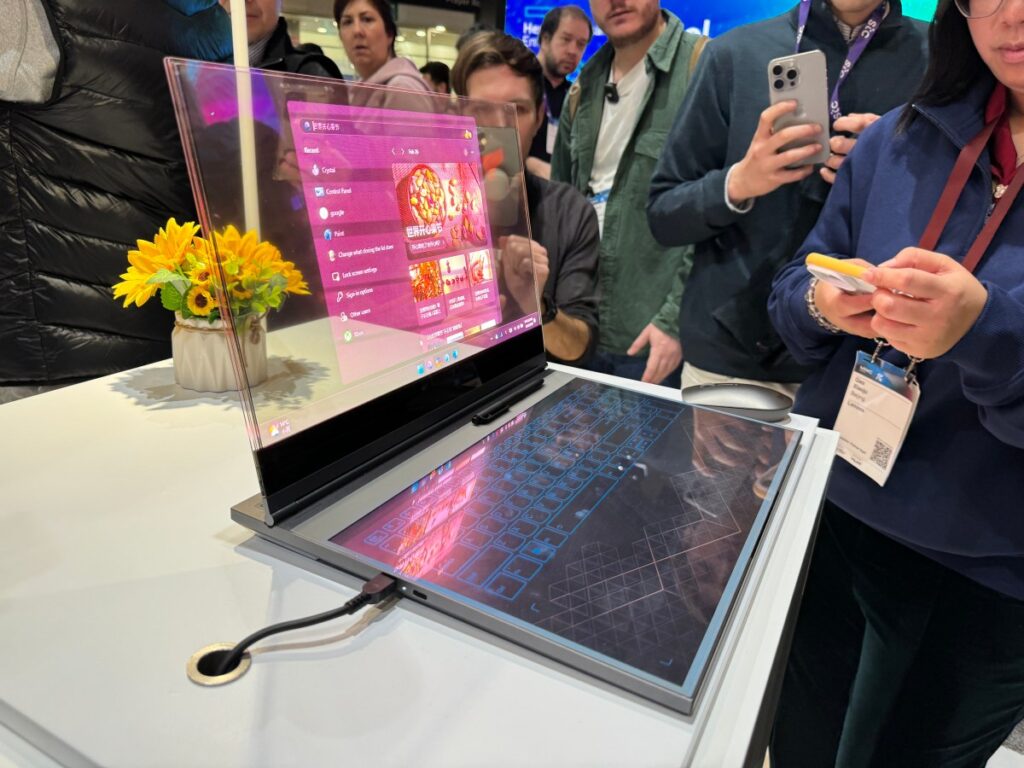Something I've always admired about Lenovo is the way the Chinese tech giant lets its weird flag fly. In fact, visiting the corporate booth just down the road, on the way back to Hall 3, was one of the highlights of MWC for me. You can always tell where the latest bit of weirdness is by a group of people taking smartphone video of the thing.
This year's big scrum collector was Lenovo's long-rumored Transparent laptop. It's real. It works surprisingly well, and – as anyone can tell – its existence is a testament to form more than function. This is a perfectly good thing when it's a concept device. When it comes to actually shipping a product, that's a whole other conversation.

Image credits: Brian Heater
I'll be the first to admit that this thing is difficult to photograph – especially in a crowded showroom with a few dozen people making their way to take a look at it. In general, it looks like a laptop, with a transparent part where the screen should be. It's perhaps best understood as a type of augmented reality device, meaning its graphics are overlaid on whatever's happening behind it.
It's a crowd-pleaser, with a futuristic feel that embodies all kinds of sci-fi and tech tropes. The transparent screen has become a kind of shorthand for future technology in stored artwork, and seeing the object in action is undeniable. This is not the first time we have seen this technology, although until now it has been limited to television screens. However, the technology makes more sense in this form factor, where it could be deployed in public spaces such as hotel lobbies, or as a type of signage.

Image credits: Brian Heater
I'm racking my brain to come up with a real practical use for such a product that goes beyond looks. When I think about working at my laptop, more often than not, I find myself facing a wall. Sometimes, I face a window with light pouring in. I'm curious how this would work in daylight. Sure, the 1000 max is quite bright, but it's hard to say how it handles direct sunlight.
I'm currently writing this in the MWC media lounge. It's not a wall or direct sunlight, but the view in front of my MacBook is just someone's ThinkPad. I don't know that transparency would add much in this case. He'll also be able to see me through it – the back of the device presents a mirror image of the front of the screen.

Image credits: Brian Heater
The bottom of the device is covered with a large touch surface. This area serves as a keyboard and a large pen-compatible drawing surface. The flat surface can't compete with real tactile keyboards, of course. Typing isn't the best experience here, as evidenced by previous dual-screen Lenovo laptops. But that's the trade-off for the versatility of the virtual version.
At the moment, it seems unlikely that this concept will move into production. Lenovo likes to make weird technology for the sake of weird technology, and that's totally fine. However, the company has also brought its share of exotic products to the market. Take the recent example of the X1 Fold. Strange things happened.

